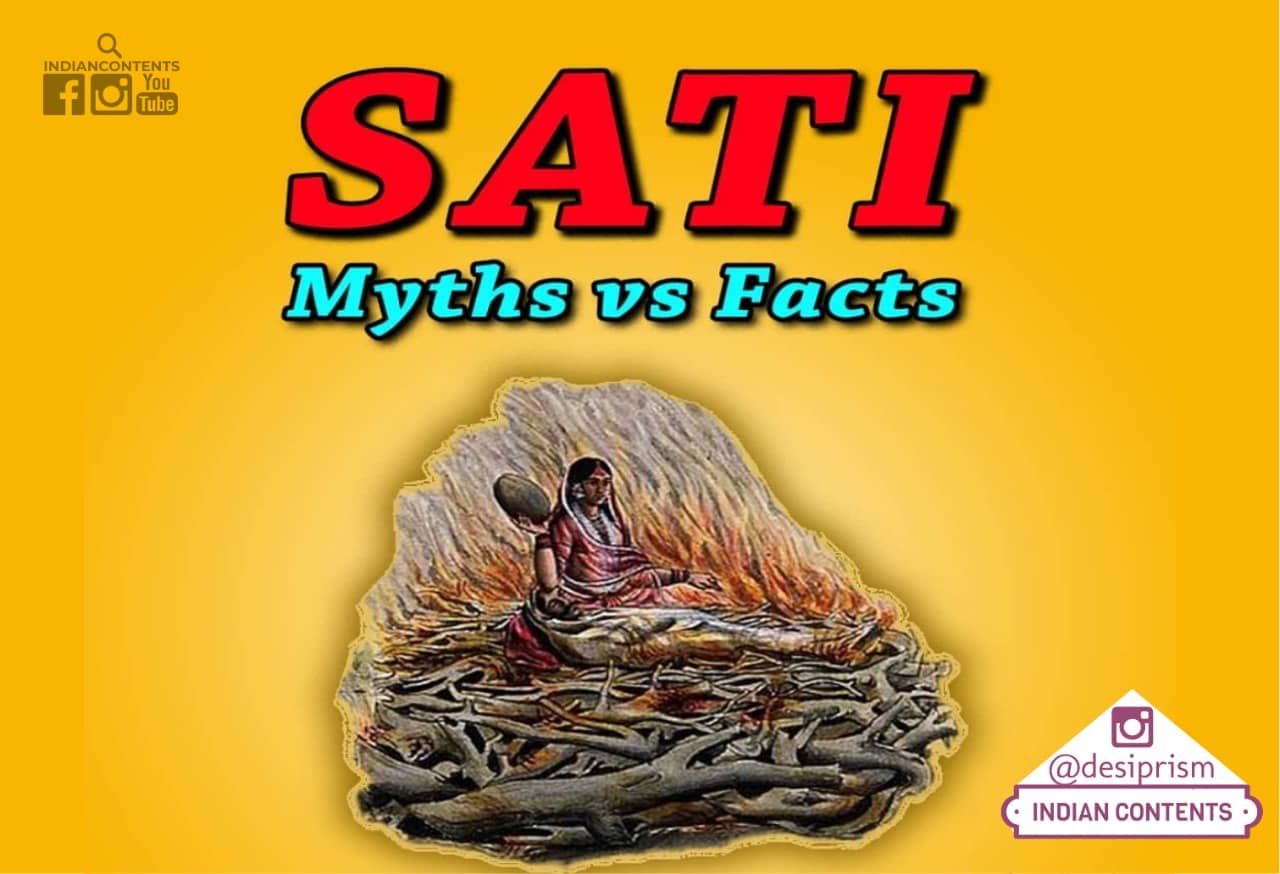
The issue of Sati has been used as a cajole to stop Hindus from speaking up truthfully about their own history and analyse this complex issue.
The vested interests - earlier the colonial missionaries and now the sepoys 2.0 have dominated the narrative around this issue and succeeded in fooling and gaslighting Hindus into believing myths about their own history and culture.
An honest look at this practice will debunk many of the popular myths surrounding the issue which were sometimes invented out of thin air for the sole purpose of narrative building and to portray Hindu culture in a negative light.
INTRODUCTION
Sati as understood commonly as an evil practice refers to the "forced" burning of widows after their husband's death.
However this understanding of Sati will lead us to question the many prevalent myths surrounding it.
Towards the end we will understand why these myths persist and what purpose is served by spreading these myths.
Myth -1 : Sati was an ancient practice
While we have some instances of widows committing self-immolation in the ancient era, that wouldn't amount to forced burning of widows as they have chosen it on their freewill and the vast majority of widows have NOT chosen to do it.
The practice of forced burning of widows was a phenomenon that developed only in the late medieval era.
Myth - 2 : Sati was mandatory
The Hindu religious texts since the Vedic age do not mandate Sati. Most of them in the early ages don't even mention such a thing as Sati. And the later authors have never mandated it and in fact even discouraged self-immolation.
We have countless examples of people discouraging sometimes successfully and sometimes unsuccessfully, widows from committing Sati.
Myth - 3 : Sati was widespread
For the first thousands of years of Hindu civilization we find only scant references to the instances of Sati and none of the texts from this era even consider it anything but that extremely rare.
During the medieval era when it was more prominent than ever in history it was still limited to very few regions and a tiny percentage of widows ever committed or were forced to commit Sati.
Myth - 4 : Sati was a Hindu practice
There are instances of Sati that were committed by not just Hindus but Sikhs, pins etc. among others throughout history.
Moreover alleging that the practice was Hindu, gives the false impression that forced burning of widows was somehow mandated by Hinduism which it wasn't.
Myth - 5 : Sati was unique to India
Forget Hinduism the practice of widows committing suicide after their dead husbands was not even unique to India.
Ancient China, Egypt, Europe like Germans and Celtics have all recorded instances similar to Sati where widows and concubines were found buried with the dead spouse.
PROBLEM
The inaccurate understanding of Sati leads us to believe that it is an ancient, patriarchal, regressive practice promoted by Hinduism.
This sort of view prevents us from realizing why Sati became more prominent in the medieval era and the factors that contributed to it - the primary one of which is the Islamic invasions and the introduction of sex slavery into the Indian subcontinent.
ANALYSIS
The myths around Sati were invented by the early Christian missionaries to gain support for their "civilizing" mission of the Indian people who needed the white man and his religion to advance from the dark ages.
Today whoever pushes these false myths are continuing that mission of Breaking India, and gaslighting Hindus from realizing the complex history of the practice and the factors that contributed to it prevalence in middle ages.
CONCLUSION
The myths around Sati actively pushed by Christian Missionaries during colonial era and by Indian Sepoys 2.0 today have made an extremely rare and heroic act committed by some women despite discouragement into a defining feature of Hindu history and society.
While Hindus are more willing than any other society to correct their ills, this kind of nuance-deficient narrative around Sati needs to be questioned every time it is brought up by motivated actors.
.
Article By : @DesiPrism
.
Further Reading:
1. Sati: Evangelicals, Baptist Missionaries, and the changing Colonial Discourse by Meenakshi Jain
2. The Sati Strategy: How missionaries Used an Extinct Practice as a rallying point to Christianise India by Koenraad Elst.






1 Comments
Meenakshi Sundareshwar Full Movie Free Download Watch Online Downloadhub
ReplyDelete